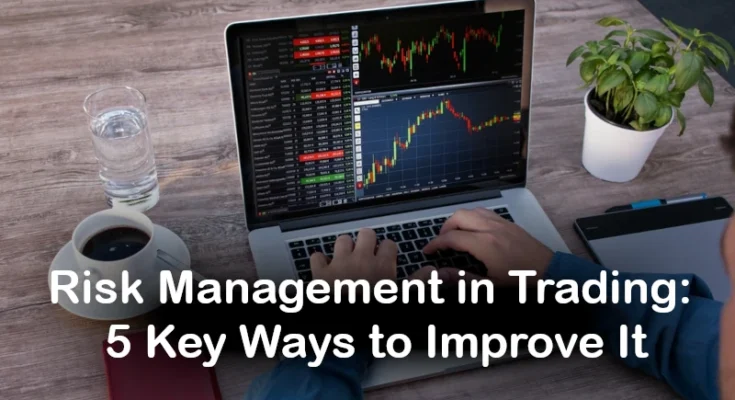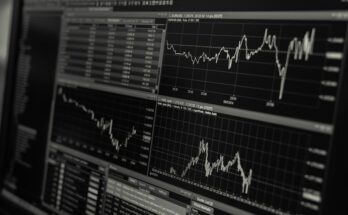There is a tool that will help you minimize your losses: trading risk management. You must understand that all traders are exposed to risk; there is no way to avoid it completely. However, knowing how to manage it will make your trading strategy more efficient.
Keep in mind that some people’s perception of a successful trader is one that makes a lot of profit on their trade. However, it is more advisable to implement a strategy that, in addition to focusing on profitability, allows you to limit the risk in your operation.
Continue reading this article and learn the concepts necessary for you to understand the importance of risk management in trading. In addition, we share five ways with which you can implement this correct handling.
What is risk management in trading?
Risk management in trading is the way in which losses are reduced when trading financial markets and a way to protect the trader from losing all his money. Keep in mind that in trading there is always this possibility, for that reason you have to learn to do it the right way.
You must learn the technical side, this is in relation to your capital, the market you are operating, and the type of financial instrument. Also, learn ways to stop your losses with the “stop loss”, which we will tell you about in detail later.
On the other hand, something we always recommend is to develop a correct trader mindset. This aspect will be essential in your career, as it will help you control your emotions when operating the financial markets.
You should always consider this in your risk control in trading since it will be a key element to face losses. You must have emotional stability since a wrong reaction could fuel panic and make you commit an action that compromises your financial health.
What are the risks of trading?
Trading is exciting. However, we want to make it very clear that it requires experience, professionalism, and practice. We do not mean that it is impossible or very complicated to learn, but if it is not done correctly, you could lose your money and end up with a bad trading outlook.
Therefore, you must keep in mind that the world of trading is based on probabilities and it is necessary to take into account how the financial markets behave. There is no way to be sure what will happen: prices can go up or down suddenly due to multiple variables. Thus, if you trade the markets without a strategy or a plan, without having practiced, without proper risk management in trading, and without general knowledge, it is highly likely that you will lose your money.
What is the stop loss and how to calculate it?
The stop loss is a tool that serves to establish the monetary limit that you can reach when operating with a financial asset. It is undoubtedly something that you should implement in your strategy, as it is a very effective way to protect your capital.
You can set your stop-loss automatically at the broker you use. The ICM Capital review will help you choose a suitable broker and become a better trader using stop-loss. This way you will limit your potential losses in case the market behavior is not favorable.
There is no definitive answer to calculate your stop loss, it will depend entirely on you and your activity as a trader. Consider aspects such as your risk tolerance, your capital, the market in which you operate, and the financial instrument. These elements will help you to have a general perspective of your activity and you will be able to establish precisely how much you can afford to lose in a day and for each transaction.
How to manage risk in trading?
There are five actions you can start implementing to manage risk in trading such as:
Plan your operations
Learn about technical analysis so that you understand the trends and patterns that the prices of financial assets follow. Likewise, use this tool to carry out pre-market analysis, that is, to understand how a financial market has behaved and what type of movements are more likely to make you win and lose less.
Try the one percent rule
This rule is used to establish the amount that you can use to carry out a trading operation. You only have to take 1% of your total capital and that amount will be the maximum you can use in a trade. It is a way to control risk since you would be operating with a minimum amount that should not compromise your capital so much.
Use Stop Loss and Take Profit
As we told you before, the stop loss is the automatic limit that you can set on the amount of money that you can afford to lose on a trade. This type of order minimizes your losses while maintaining a minimum level of risk. Likewise, you can establish an order known as take profit, in which, depending on the positive price expectation of a financial instrument, you can establish the limit at which you must stop your operation to obtain it.
Diversify
The risk increases when your investment portfolio is made up of a reduced number of financial assets. This is because by depending on a few assets, if their prices go down, the total price of your portfolio will too. For this reason, it invests in financial assets that depend on different market circumstances. Thus, in the event that one of your assets falls in price, the others may rise; in this way, you maintain a balance and reduce the risk of losses.
Calculate the return on investment
This type of calculation will allow you to visualize the possible profitability when operating with a specific financial asset. Keep this possibility in mind when making your moves in the market; however, remember that these are not exact results, they are only approximations. Accompany this calculation with your technical analysis and pre-market activity.
Remember that any risk-related tool and methodology should be considered according to your experience and strategy. These are recommendations and information that will be useful to you; however, you should only apply them by performing a thorough prior analysis.
Importance of risk management in trading
Managing risk correctly is very important for the day-to-day of your operation because it will allow you to lose the least amount of money possible; it is a way to set the limits on your activity and know how far you can go without committing your capital. If you have a correct relationship between risk and benefit, you will be able to continue your activity as a trader every day.
The best risk-benefit ratio is one to two; that is, you risk one to win two, it is one of the most basic and most important that exist.
Conclusion
Trading is an excellent career that will allow you to earn money to achieve financial freedom, so don’t think twice and choose to continue learning to become a professional trader and be successful in the long term.
Also Read: Why you should trade the market with the premium broker




